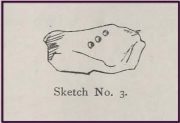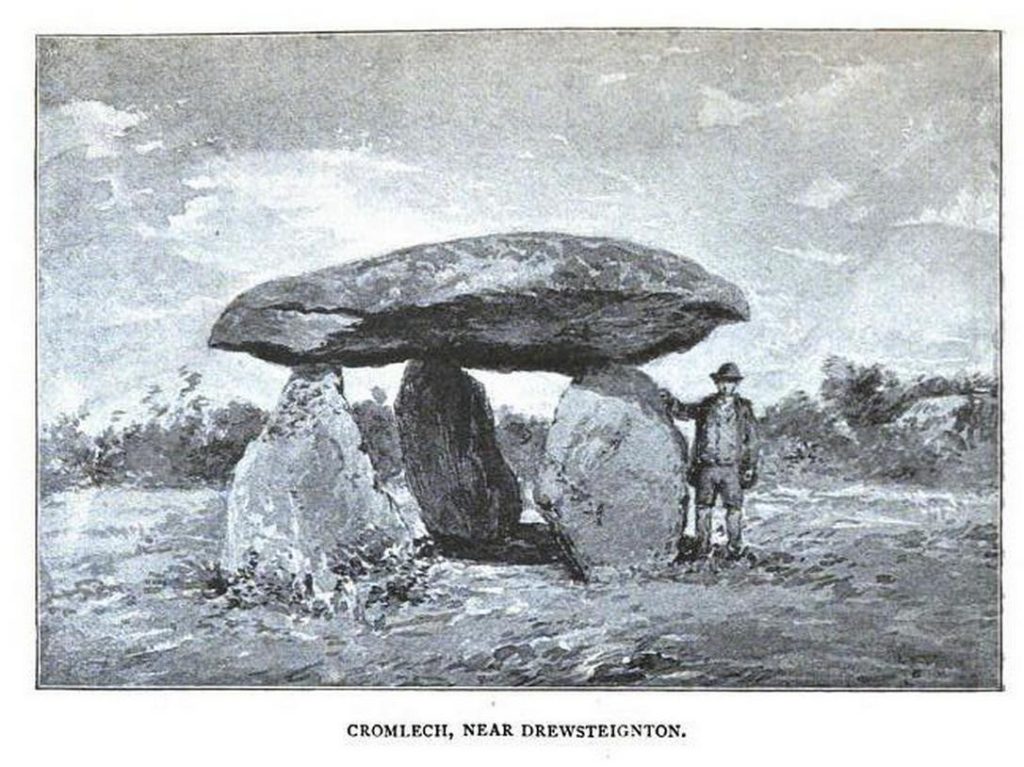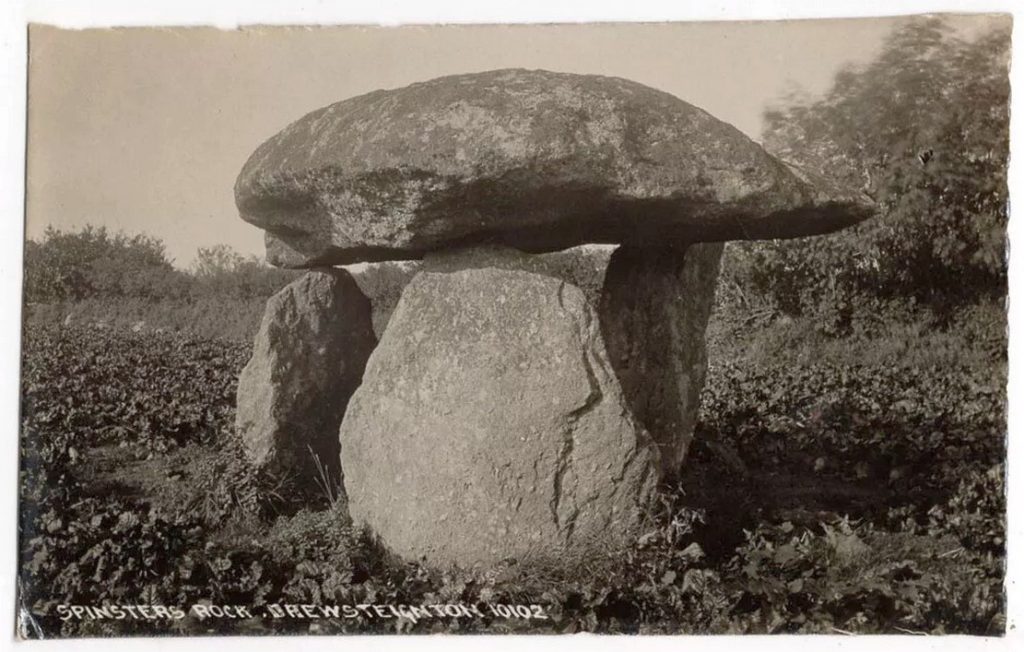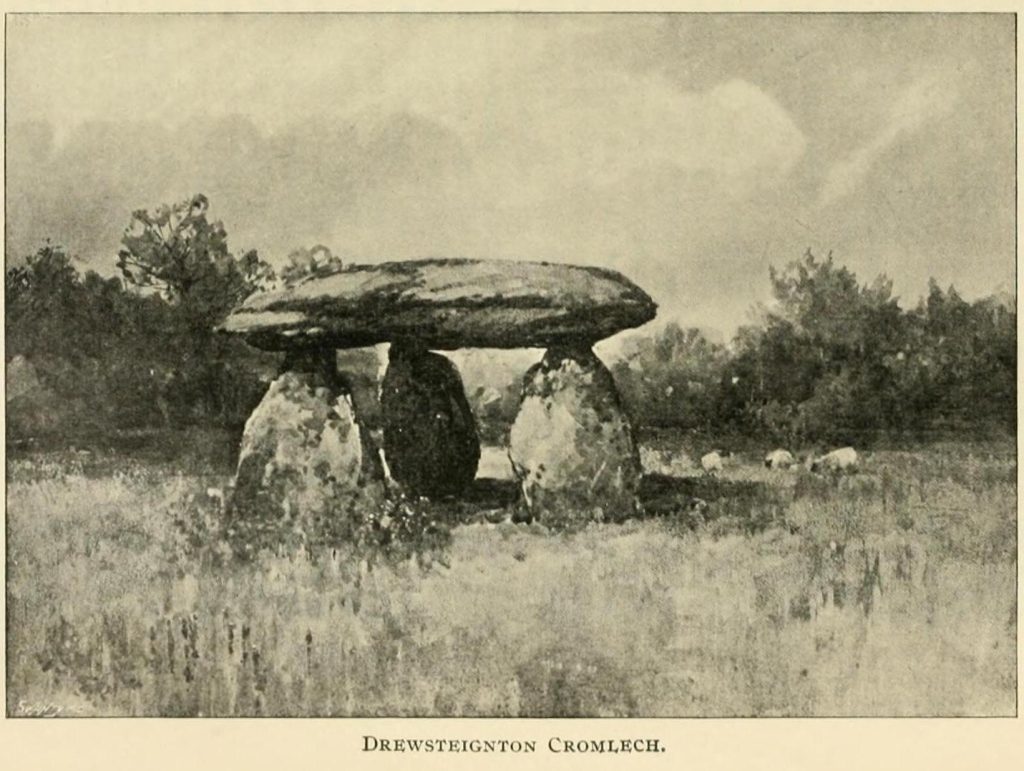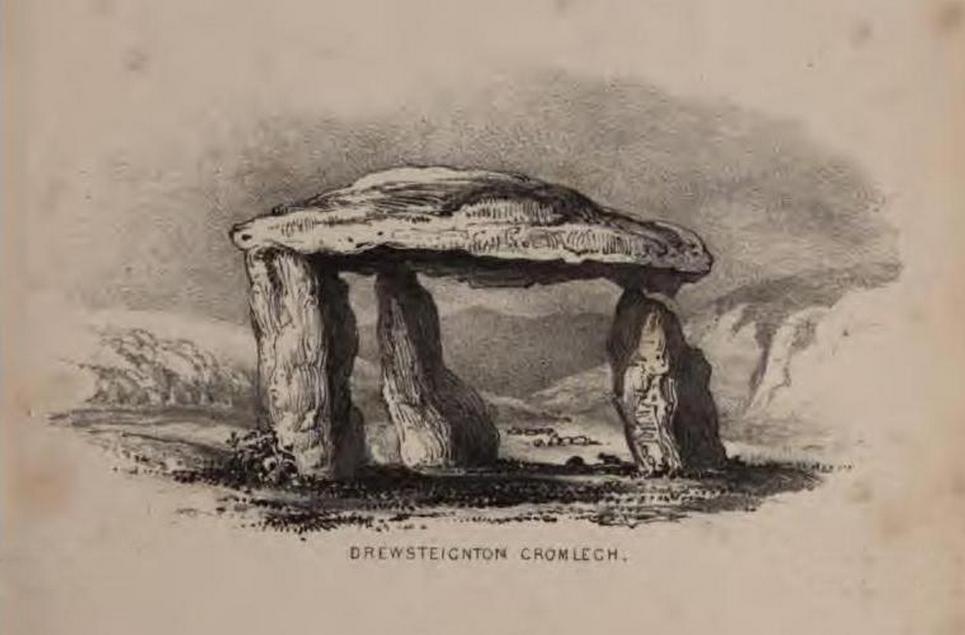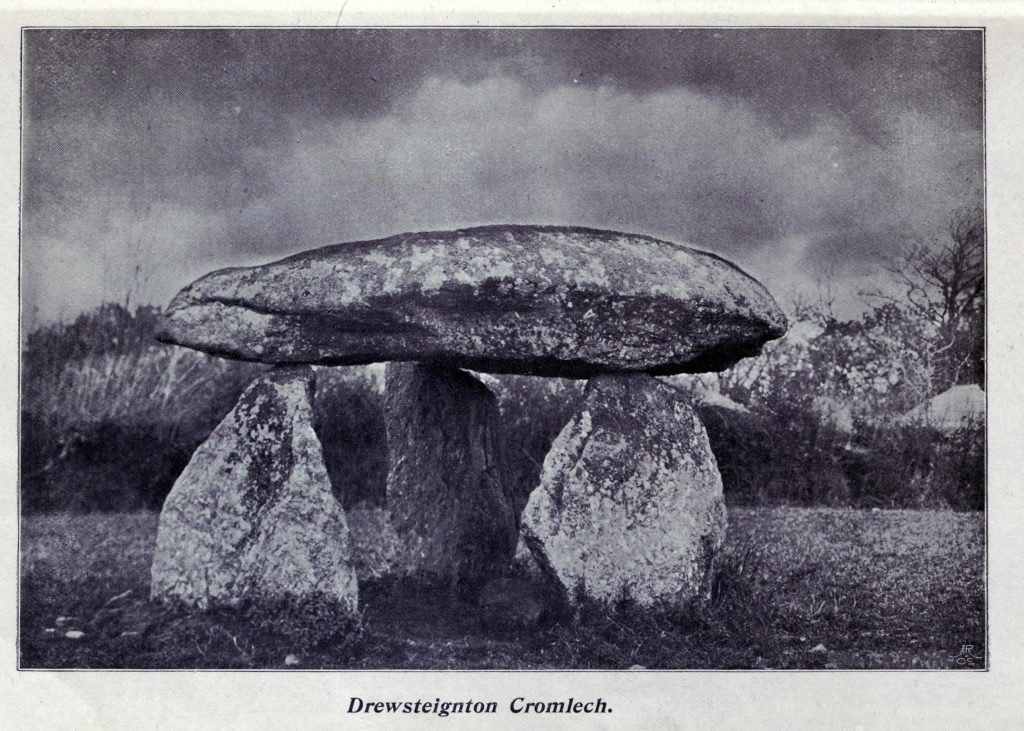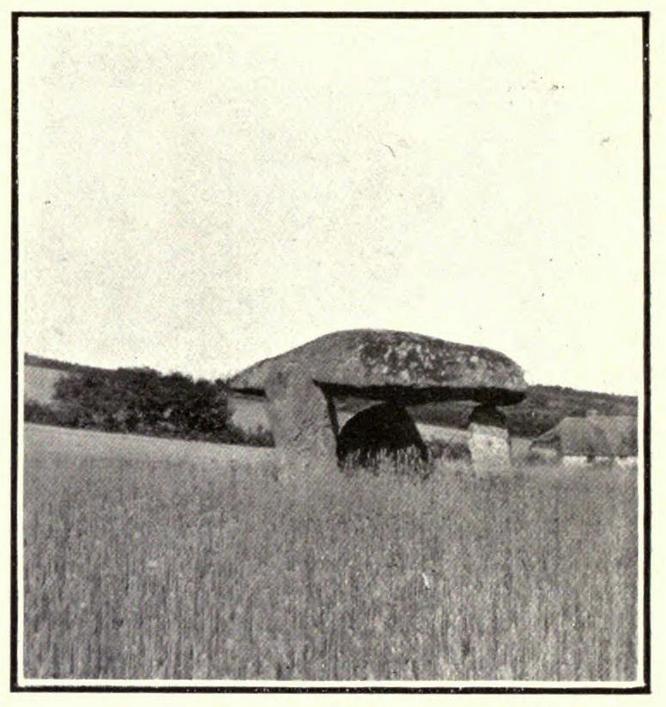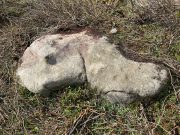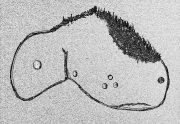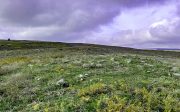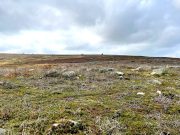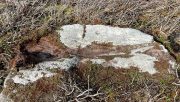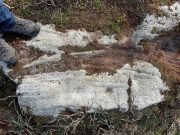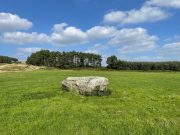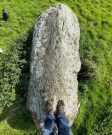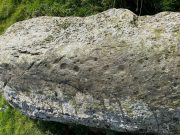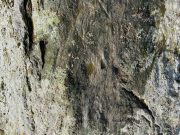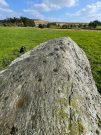Cup-and-Ring Stones (lost): OS Grid Reference – NS 444 747
Archaeology & History
A couple of interesting multiple-ringed carvings were found high up on the slopes above Bowling, not far from the Bow Linn waterfalls, near the end of the 19th century. John Bruce (1893) told that, shortly after the discovery of the Cochno carvings,
“in the year 1889, two cup and ring marked stones were discovered in a dyke near the old farmhouse of Auchentorlie while the reservoir for the district water supply was being excavated close by.”
But since then, they seem to have disappeared. Searches for them by the old petroglyph writer Ron Morris in the 1960s and the Royal Commission lads in the 1970s both drew a blank. If we’re lucky, they might be hiding in a box somewhere, in the storage rooms of Glasgow’s Kelvingrove Museum. As you can from the sketches done by W.A. Donnelly, they’re quite impressive. The drawings give the impression that they were small portable carvings, which may suggest they were once part of a prehistoric cist or cairn, although no such site has been found in this locale. If this isn’t the case, their small size is an oddity.
References:
- Bruce, John, The History of the Parish of West or Old Kilpatrick, John Smith: Glasgow 1893.
- Morris, Ronald W.B. & Bailey, Douglas C., “The Cup-and-Ring Marks and Similar Sculptures of Southwestern Scotland: A Survey,” in Proceedings of the Society of Antiquaries, Scotland, volume 98, 1966.
- Royal Commission Ancient Historical Monuments, Scotland, The Archaeological Sites and Monuments of Dumbarton District…, HMSO: Edinburgh 1978.
© Paul Bennett, The Northern Antiquarian
The map could not be loaded. Please contact the site owner.

